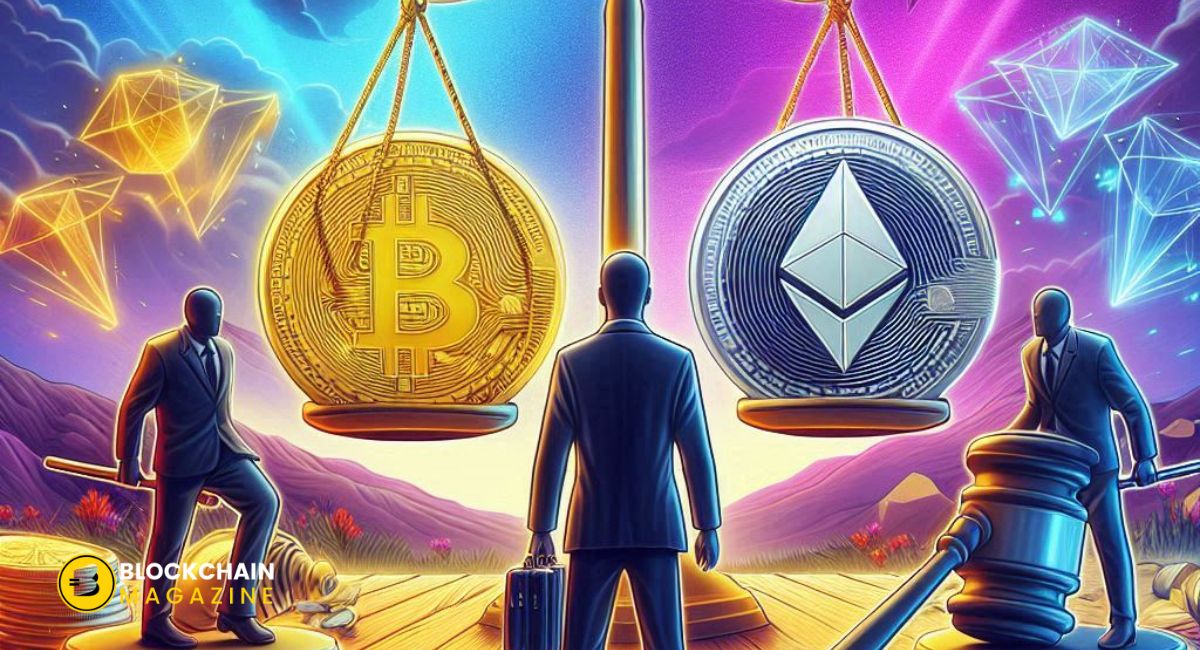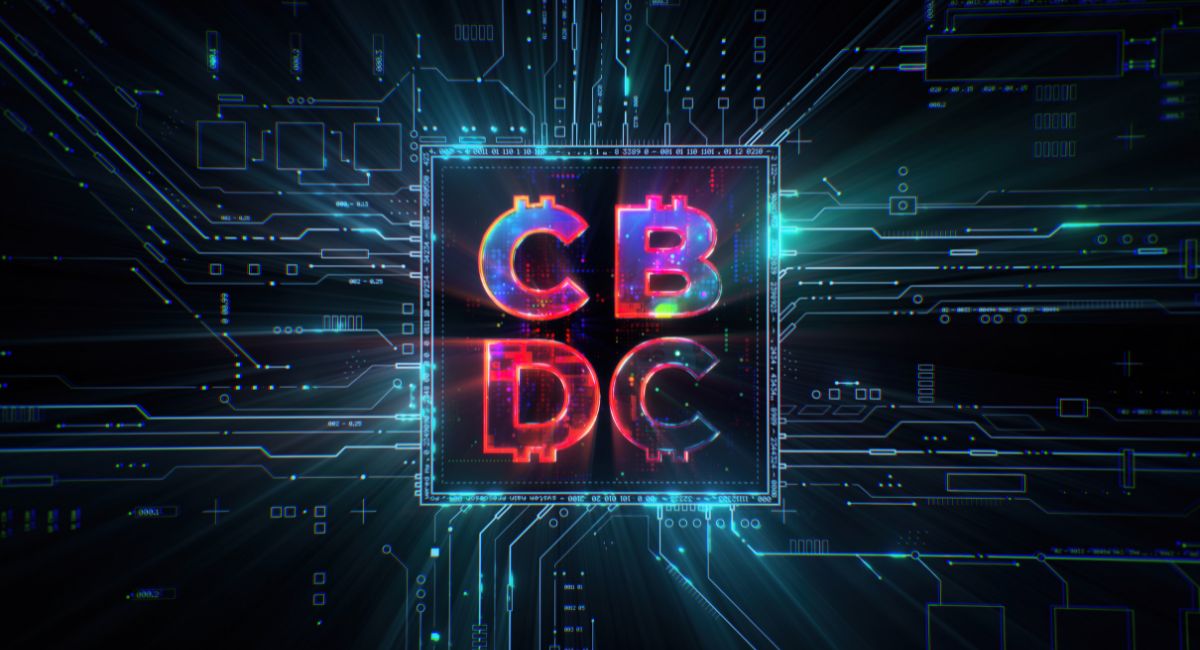Decentralized Stablecoins vs. Centralized Stablecoins: The Battle for Financial Stability in the Crypto Market
As the cryptocurrency market has evolved, so too have the financial instruments designed to address its notorious volatility. Among these are stablecoins—digital assets designed to maintain a stable value by being pegged to traditional currencies like the U.S. dollar, the euro, or a basket of assets. Stablecoins have become a cornerstone of the crypto market, providing liquidity, facilitating transactions, and serving as a refuge from market volatility.
However, not all stablecoins are created equal. There are two main categories: centralized stablecoins and decentralized stablecoins. Each type brings unique benefits and risks, particularly concerning financial stability, transparency, and governance. As of 2024, the debate over which model offers a more secure, resilient, and trustworthy foundation for the crypto ecosystem continues to intensify.
This article will explore the key differences between decentralized and centralized stablecoins, examine their roles in the broader crypto market, and assess how the ongoing competition between these two models might shape the future of financial stability in the decentralized economy.
What Are Stablecoins?
Stablecoins are cryptocurrencies designed to minimize price volatility by maintaining a stable value, typically through a peg to a fiat currency such as the U.S. dollar, or through a basket of assets. Unlike traditional cryptocurrencies like Bitcoin (BTC) or Ethereum (ETH), which can experience extreme price swings, stablecoins aim to provide a stable store of value, making them ideal for use in everyday transactions, trading, and as a store of wealth.
Stablecoins serve several purposes in the crypto economy:
- Facilitating crypto trading by providing a stable medium of exchange on exchanges.
- Hedging against volatility by allowing users to move into a stable asset without converting to fiat.
- Enabling decentralized finance (DeFi) applications, such as lending, borrowing, and yield farming.
- Facilitating cross-border payments by providing a stable digital currency for international transfers.
The two primary categories of stablecoins—centralized and decentralized—approach the problem of maintaining stability in vastly different ways.
Also, read – Ascendant Stablecoins: A Harbinger of Crypto Market Revival
Centralized Stablecoins
Definition and Mechanism
Centralized stablecoins are issued by centralized entities or companies, which manage the issuance, redemption, and backing of the coins. These stablecoins are typically backed 1:1 by fiat currency reserves or other real-world assets held by a trusted third party, such as a bank. The issuing entity is responsible for ensuring that every unit of the stablecoin in circulation is backed by an equivalent amount of fiat or assets held in reserve.
Popular examples of centralized stablecoins include:
- Tether (USDT): The largest and most widely used stablecoin, reportedly backed by a combination of cash, short-term debt, and other assets.
- USD Coin (USDC): Issued by Circle in partnership with Coinbase, USDC is fully backed by U.S. dollars held in reserve.
- Binance USD (BUSD): A stablecoin issued by Binance, backed by U.S. dollar reserves and regulated by the New York State Department of Financial Services (NYDFS).
How Centralized Stablecoins Maintain Stability
Centralized stablecoins maintain their peg through a straightforward mechanism: for every token issued, an equivalent amount of fiat or other assets is held in a reserve account. When users buy a centralized stablecoin, they essentially exchange fiat currency for an equivalent amount of digital tokens. When they want to redeem their stablecoins for fiat, the issuing entity burns (destroys) the stablecoins and releases the corresponding fiat to the user.
This ensures that the stablecoin maintains its peg to the fiat currency, provided the issuer has enough reserves to back the coins in circulation.
Benefits of Centralized Stablecoins
- Transparency and Simplicity: Many centralized stablecoins provide regular audits of their reserves, which offers transparency to users and reassures them that the stablecoins are fully backed.
- Price Stability: The peg to fiat currencies is relatively easy to maintain, thanks to the backing by real-world assets.
- Regulatory Oversight: Centralized stablecoins often operate under strict regulatory frameworks, which can provide legal protections for users and offer confidence that the issuing entity is complying with local laws.
- Liquidity: Centralized stablecoins, particularly USDT and USDC, are widely used on both centralized and decentralized exchanges, ensuring high liquidity and broad acceptance.
Challenges of Centralized Stablecoins
- Centralization and Trust: By their very nature, centralized stablecoins require users to trust the issuing entity to manage reserves responsibly and maintain the peg. This introduces counterparty risk, as users are dependent on the issuer’s solvency and transparency.
- Regulatory Risks: Centralized stablecoins are subject to regulation, and their operations could be disrupted by government interventions, sanctions, or changes in legal frameworks. In 2023, for example, BUSD faced regulatory scrutiny, forcing its issuer, Paxos, to stop minting new tokens.
- Censorship Concerns: Centralized issuers have the ability to freeze or blacklist addresses, limiting the free movement of funds in certain cases. For instance, Tether and USDC have previously frozen assets in response to legal requests or sanctions, raising concerns about censorship in the crypto space.
Decentralized Stablecoins
Definition and Mechanism
Decentralized stablecoins aim to achieve price stability without relying on a centralized issuer or trusted third party. Instead, they use smart contracts, algorithms, and decentralized governance to maintain their peg. The backing mechanism can vary widely, with some decentralized stablecoins being backed by cryptocurrencies or other decentralized assets, while others use more complex algorithms to adjust supply and demand.
Prominent examples of decentralized stablecoins include:
- Dai (DAI): Issued by the MakerDAO protocol, Dai is an overcollateralized stablecoin backed by a variety of cryptocurrencies.
- Frax (FRAX): A partially algorithmic stablecoin that combines collateralized assets and algorithmic supply adjustments to maintain its peg.
- TerraUSD (UST): An algorithmic stablecoin that once operated without traditional reserves but collapsed in 2022, illustrating the risks involved in purely algorithmic stablecoins.
How Decentralized Stablecoins Maintain Stability
Decentralized stablecoins typically rely on complex mechanisms to maintain their peg. The two primary methods include:
- Collateralization: Stablecoins like DAI are backed by overcollateralized cryptocurrencies. To issue DAI, users lock up assets such as Ethereum (ETH) in a smart contract. The smart contract ensures that the value of the collateral always exceeds the value of the issued stablecoin, thus maintaining the peg even if the price of the collateral fluctuates. If the collateral’s value falls below a certain threshold, the system automatically liquidates the collateral to maintain the stability of the stablecoin.
- Algorithmic Adjustments: Algorithmic stablecoins, such as FRAX or the now-defunct UST, rely on algorithms that adjust the supply of the stablecoin in response to changes in demand. For example, if the price of the stablecoin rises above the peg, the protocol may issue more tokens to increase supply and bring the price back down. If the price falls below the peg, the protocol may reduce the supply by incentivizing users to burn tokens, restoring the peg.
Benefits of Decentralized Stablecoins
- Decentralization and Censorship Resistance: Since decentralized stablecoins are issued and governed by smart contracts, there is no single entity controlling the stablecoin. This makes them resistant to censorship and government intervention.
- Trustlessness: Users do not need to trust a centralized issuer, as the smart contracts ensure that the system operates as intended, provided the underlying code is secure and well-audited.
- Innovation and Flexibility: Decentralized stablecoins, especially those using algorithmic mechanisms, offer innovative ways to maintain stability without relying on fiat reserves. This makes them more flexible in responding to market conditions and allows for experimentation within the decentralized finance (DeFi) space.
Challenges of Decentralized Stablecoins
- Volatility and Risk: Decentralized stablecoins are often backed by volatile assets like cryptocurrencies, making them more susceptible to price fluctuations. Overcollateralization can mitigate this to some extent, but it requires users to lock up significant amounts of collateral, reducing capital efficiency.
- Algorithmic Failure: Purely algorithmic stablecoins are highly experimental and have shown a propensity for failure. The collapse of TerraUSD (UST) in 2022 serves as a cautionary tale, as the stablecoin lost its peg and triggered a massive market crash, wiping out billions of dollars in value.
- Complexity: Decentralized stablecoins are often more complex than their centralized counterparts, making them harder for the average user to understand. This complexity can introduce risks if users do not fully grasp how the system operates or if there are vulnerabilities in the smart contracts.
Centralized vs. Decentralized Stablecoins: Key Differences
1. Trust Model
- Centralized Stablecoins: Rely on trust in the issuer or custodians to maintain the reserves backing the stablecoin. Users need to believe that the issuing entity has sufficient reserves and operates transparently.
- Decentralized Stablecoins: Operate on a trustless model where smart contracts, algorithms, and decentralized governance ensure that the system functions as intended without relying on any central authority.
2. Collateralization
- Centralized Stablecoins: Are typically backed by fiat reserves or other real-world assets held by a centralized entity.
- Decentralized Stablecoins: Can be overcollateralized with cryptocurrencies or backed by a combination of collateral and algorithmic mechanisms.
3. Regulation
- Centralized Stablecoins: Are subject to regulatory oversight and must comply with laws governing money transmission, anti-money laundering (AML), and know-your-customer (KYC) rules.
- Decentralized Stablecoins: Operate outside the traditional financial system, often avoiding direct regulatory scrutiny. However, they may face increasing pressure from regulators in the future.
4. Censorship Resistance
- Centralized Stablecoins: Can be censored or frozen by the issuing entity in response to legal or regulatory demands.
- Decentralized Stablecoins: Are resistant to censorship, as no single entity controls the issuance or movement of funds.
The Battle for Financial Stability in the Crypto Market
The competition between centralized and decentralized stablecoins is not just a technical or ideological debate—it is a battle for the future of financial stability in the crypto market. Both models offer unique advantages and trade-offs, and their coexistence reflects the diversity of the cryptocurrency ecosystem.
- Centralized stablecoins like USDT, USDC, and BUSD have achieved widespread adoption, thanks to their transparency, liquidity, and regulatory compliance. These stablecoins have become integral to the functioning of both centralized and decentralized exchanges, facilitating trading, lending, and payments.
- Decentralized stablecoins like DAI and FRAX are pushing the boundaries of what is possible in a decentralized financial system. They offer an alternative to the traditional fiat-backed model, enabling users to transact without relying on centralized authorities. While decentralized stablecoins face greater risks due to their collateral structures and algorithmic mechanisms, they are also more resistant to censorship and regulatory intervention.
The Future: A Hybrid Approach?
As the stablecoin market matures, we may see the emergence of hybrid models that combine the best elements of both centralized and decentralized stablecoins. For example, some projects are exploring the use of algorithmic mechanisms backed by real-world assets, creating a more resilient and diversified approach to maintaining stability.
Additionally, the increasing regulation of centralized stablecoins could drive more users toward decentralized alternatives, particularly in jurisdictions where stablecoins are subject to stringent controls or where users seek greater privacy and autonomy.
Conclusion
The battle between centralized and decentralized stablecoins represents a crucial turning point in the evolution of the crypto market. Centralized stablecoins offer stability, liquidity, and regulatory compliance, making them attractive to institutional investors and mainstream users. In contrast, decentralized stablecoins push the boundaries of financial innovation, offering censorship resistance and greater autonomy.
Ultimately, both models have their place in the crypto ecosystem, and the ongoing competition will likely drive further innovation in the stablecoin space. As the market continues to evolve, the question of which model will dominate remains open, but one thing is clear: stablecoins—whether centralized or decentralized—are poised to play a critical role in the future of finance.
Stay informed with daily updates from Blockchain Magazine on Google News. Click here to follow us and mark as favorite: [Blockchain Magazine on Google News].
Get Blockchain Insights In Inbox
Stay ahead of the curve with expert analysis and market updates.
latest from tech
Disclaimer: Any post shared by a third-party agency are sponsored and Blockchain Magazine has no views on any such posts. The views and opinions expressed in this post are those of the clients and do not necessarily reflect the official policy or position of Blockchain Magazine. The information provided in this post is for informational purposes only and should not be considered as financial, investment, or professional advice. Blockchain Magazine does not endorse or promote any specific products, services, or companies mentioned in this posts. Readers are encouraged to conduct their own research and consult with a qualified professional before making any financial decisions. The featured image used is just a creative depiction of the title and it does not intend to hurt sentiments of any person or institution. If it hurts anyone sentiments, please do not hesitate to reach out to Blockchain Magazine.

 Bitcoin
Bitcoin  Ethereum
Ethereum  XRP
XRP  Tether
Tether  Solana
Solana  USDC
USDC  Dogecoin
Dogecoin  Cardano
Cardano  Lido Staked Ether
Lido Staked Ether  TRON
TRON  Chainlink
Chainlink  Avalanche
Avalanche  Wrapped stETH
Wrapped stETH  Wrapped Bitcoin
Wrapped Bitcoin  Stellar
Stellar  Sui
Sui  Toncoin
Toncoin  Hedera
Hedera  Shiba Inu
Shiba Inu  WETH
WETH  Litecoin
Litecoin  Polkadot
Polkadot  Hyperliquid
Hyperliquid  LEO Token
LEO Token  Bitcoin Cash
Bitcoin Cash  Bitget Token
Bitget Token  Uniswap
Uniswap  Wrapped eETH
Wrapped eETH  USDS
USDS  Ethena USDe
Ethena USDe  Pepe
Pepe  NEAR Protocol
NEAR Protocol  Official Trump
Official Trump  MANTRA
MANTRA  Aave
Aave  Ondo
Ondo  Aptos
Aptos  Internet Computer
Internet Computer  Monero
Monero  Mantle
Mantle  Ethereum Classic
Ethereum Classic  WhiteBIT Coin
WhiteBIT Coin  Bittensor
Bittensor  Cronos
Cronos  Dai
Dai  POL (ex-MATIC)
POL (ex-MATIC)  OKB
OKB 




